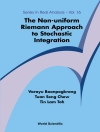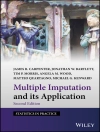
This book focusses on techniques for automating the procedure of creating external labelings, also known as callout labelings. In this labeling type, the features within an illustration are connected by thin leader lines (called leaders) with their labels, which are placed in the empty space surrounding the image. In general, textual labels describing graphical features in maps, technical illustrations (such as assembly instructions or cutaway illustrations), or anatomy drawings are an important aspect of visualization that convey information on the objects of the visualization and help the reader understand what is being displayed. Most labeling techniques can be classified into two main categories depending on the ‘distance’ of the labels to their associated features. Internal labels are placed inside or in the direct neighborhood of features, while external labels, which form the topic of this book, are placed in the margins outside the illustration, where they do not occlude the illustration itself. Both approaches form well-studied topics in diverse areas of computer science with several important milestones. The goal of this book is twofold. The first is to serve as an entry point for the interested reader who wants to get familiar with the basic concepts of external labeling, as it introduces a unified and extensible taxonomy of labeling models suitable for a wide range of applications. The second is to serve as a point of reference for more experienced people in the field, as it brings forth a comprehensive overview of a wide range of approaches to produce external labelings that are efficient either in terms of different algorithmic optimization criteria or in terms of their usability in specific application domains. The book mostly concentrates on algorithmic aspects of external labeling, but it also presents various visual aspects that affect the aesthetic quality and usability of external labeling.
İçerik tablosu
Bibliography.- Preface.- Acknowledgments.- Figure Credits.- Introduction.- A Unified Taxonomy.- Visual Aspects of External Labeling.- Labeling Techniques.- External Labelings with Straight-Line Leaders.- External Labelings with Polyline Leaders.- Conclusions and Outlook.- Bibliography.- Authors’ Biographies.- Index .
Yazar hakkında
Michael A. Bekos is currently a postdoctoral researcher at the Algorithmic group of the Department of Computer Science of the University of TMichael A. Bekos is currently a postdoctoral researcher at the Algorithmic group of the Department of Computer Science of the University of Tübingen in Germany, while recently he was appointed as an assistant professor at the Department of Mathematics of the University of Ioannina in Greece. In 2009, he received a Ph.D. in Theoretical Computer Science from the National Technical University of Athens. His research interests primarily focus on the development of algorithms to solve problems mostly from the research areas of Map Labeling, Graph Drawing, and Graph Theory. His research work counts more than 100 peer-reviewed research papers, and among them more than 15 on various aspects of labeling.
Benjamin Niedermann obtained his Ph.D. in Computer Science from the Karlsruhe Institute of Technology (KIT), Germany, in 2017. From 2017—2021, he wasa member of the research group Geoinformation at the University of Bonn. His research interests comprise the development of efficient algorithms in Computational Geometry, Computational Cartography, and Geoprocessing. One main focus of his research is label placement in figures, maps, and dynamic scenes. It includes mathematical models, the design of algorithms with provable guarantees, as well as the empirical evaluation of the algorithms in real-world scenarios.
Martin Nöllenburg is a full professor in the Algorithms and Complexity Group at TU Wien, Vienna, Austria. He obtained a Ph.D. and habilitation degrees in Computer Science from the Karlsruhe Institute of Technology (KIT) in 2009 and 2015, respectively, and joined TU Wien as an assistant professor in 2015. His research interests include the engineering of graph and geometric algorithms, in particular for the visualization of networks and spatial data. He has published more than 140 peer-reviewed research papers, and among them more than 35 on various aspects of internal and external labeling algorithms.











